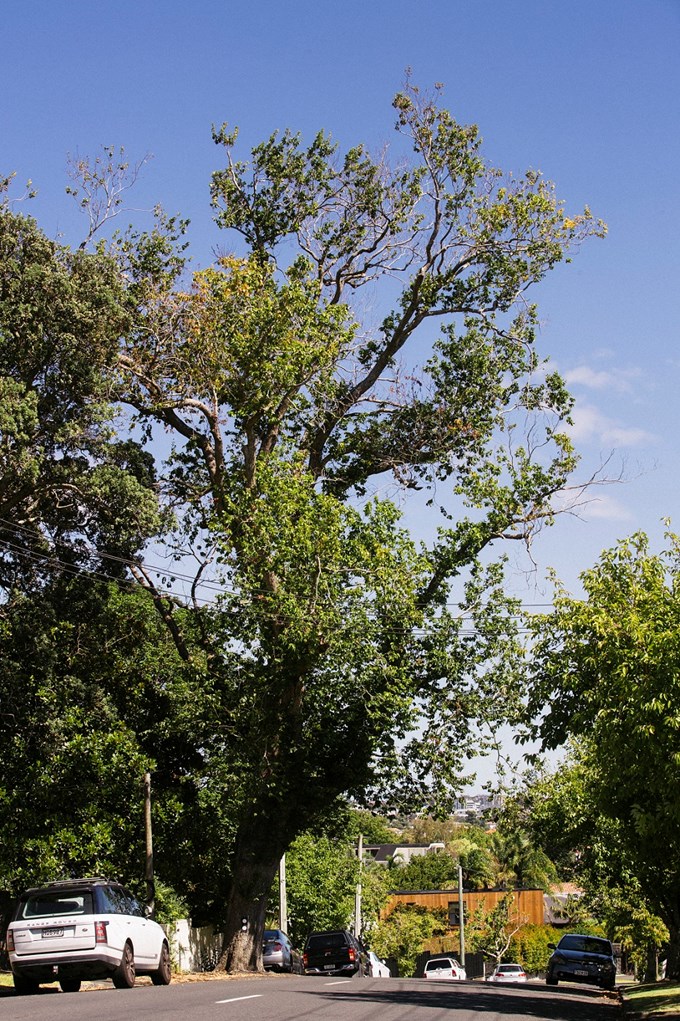An elm tree on Benson Road in Remuera will be removed after being found to have Dutch elm disease.
The fungal disease can spread quickly through a tree and is almost always fatal. It is commonly spread by elm bark beetles carrying fungal spores.
Under the Biosecurity Act 1993, it is classified as an unwanted organism and infected trees must always be removed to halt further spread of the disease, and prevent dying trees becoming a hazard.
The tree is scheduled for removal on Friday 8 March.
“The Benson Road tree is a bit of a landmark in Remuera, sitting in the road itself, and I’m devastated to lose it, says Orakei Ward Councillor Desley Simpson.
“It can take time for the disease to slowly suffocate the tree, but in acting quickly we can stop the beetles from emerging and moving on to other trees.”
Auckland Council arboriculture and eco specialist, Simon Cook, says the loss of this large, urban tree is significant.
“It’s genuinely sad each time we farewell one of our beautiful, character elms to this disease. However, while we have had a recent spike of diseased trees in the central Auckland area, each removal helps us to prevent further spread across the region.
“We have a surveillance programme across Auckland and this is how we pick up most diseased trees, but if you suspect trees in your area are showing symptoms, please do get in touch with us.”
What is Dutch elm disease?
- It is caused by the fungus Ophiostoma novo-ulmi
- The disease is commonly spread by the scolytus multistriatus (elm bark beetle) carrying fungal spores from an infected tree to disease-free trees but can also be spread between trees via root grafting
- Dutch elm disease is a destructive fungal disease and is almost always fatal once a tree is infected
- It is critical that elm wood is not carried outside Auckland, especially as logs or firewood
- Infected trees must always be removed to prevent the disease from spreading further, and the wood must be mulched to prevent dying trees becoming a source of infection or a hazard. In some areas, burning or burying elm material is an option
- No storage of elm material is allowed.
How do I identify an infected tree?
- Elm trees are easily distinguished by their large leaves, which feature serrated edges, symmetrical veins, and an asymmetrical base
- Watch for signs of wilting, curling, or yellowing leaves or dying or dead branches and trees
- If you think you've found an infected tree, contain it and contact us immediately. You should not move elm material in the greater Auckland area.


